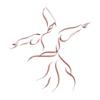Learning Copperplate...
-
Forum Statistics
355.2k
Total Topics4.6m
Total Posts -
Member Statistics
128,281
Total Members18,857
Most OnlineNewest Member
dean900
Joined -
Images
-
Albums
-
Mechanical's Pens & Ink
- By Mechanical,
- 0
- 0
- 32
-
namrehsnoom-15
- By namrehsnoom,
- 0
- 0
- 100
-
namrehsnoom-17
- By namrehsnoom,
- 0
- 0
- 65
-
Nethermark Osmia
- By Nethermark,
- 0
- 0
- 42
-
Monthly Ink Challenge III
- By InesF,
- 1
- 0
- 58
-


















.thumb.jpg.f07fa8de82f3c2bce9737ae64fbca314.jpg)




.thumb.jpg.331e554113c33fb39d5bf3233878978a.jpg)





Recommended Posts
Create an account or sign in to comment
You need to be a member in order to leave a comment
Create an account
Sign up for a new account in our community. It's easy!
Register a new accountSign in
Already have an account? Sign in here.
Sign In Now